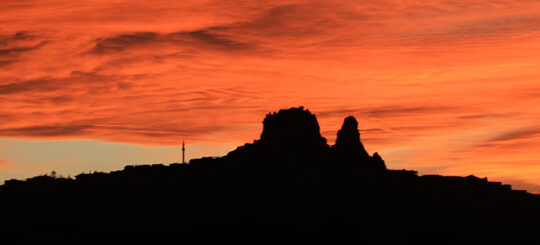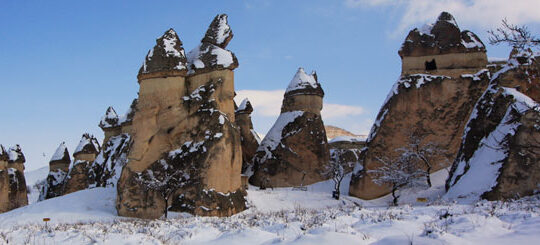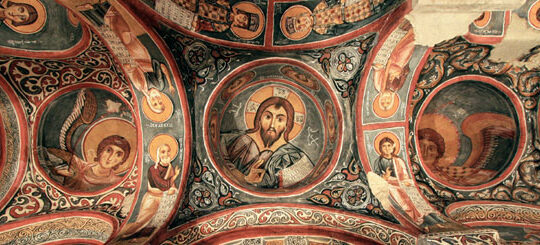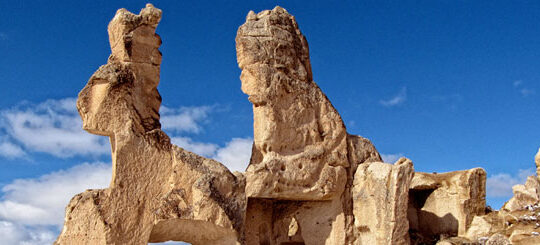Information About Cappadocia
What makes Cappadocia so exceedingly strange are the twisted, billowing forms found in the rocks, forming a ream landscape.Over millions of years, erosion covered the land with thick layers of volcanic tuff forming rock pinnacles, which were then hewn out by man into unique, evocative monuments.
The name Cappadocia probably derives from the Persian “Katpatukya”, meaning ” the land of the beautiful horses”. It is a land of vast plains, rolling hills, rugged mountains and extinct volcanoes. It is a veritable treasury of historical relics from the Chalcolithic era to the Seljuk Turks period. The visitor may seldom travel more then a few miles without encountering some derelict reminders of Cappadocia’s colorful past.
Please check below to find our some information about visiting Cappadocia.
I listed top 10 highlights of Cappadocia.
M. Halis Aydogan
Goreme Open Air Museum
Goreme is one of the oldest towns in Central Anatolia. Primarily an agricultural town, it later became an important center for the early Christians. The valley houses numerous rock hewn churches with frescos.
The churches enclosed by the open air museum contain some very well preserved frescos. The Aristocratic churches are covered with impressive Byzantine art. Refectories, kitchens, storage rooms etc. Can also be visited in the museum.
Dark Church
This church is the best example of the 11th century Byzantine Art in Cappadocia. The only source of light is a small opening in the narthex and because of this colors remain unfaded. Its the best well-preserved church of Goreme Open Air Museum and all Cappadocia region. There is an extra entrance fee for this church. We highly recommend you to visit this church. Its worth for every penny.
Kaymakli & Derinbkuyu
There are more than one hundred underground cities in Cappadocia. Due to the soft nature of the volcanic rock, early civilizations careved entire cities underground and would retreat to this refuge in times of siege. A huge rock was rolled across the entrance to seal it from the outside.
The cities comprised living quarters, cooking areas, places for worship, storage areas and on the first floor below ground were the stables. Water, fresh air and sunlight were also provided. Kaymakli & Derinkuyu known as the two biggest underground cities in Cappadocia.
Red Valley
The Red Valley is one of the most spectacular valleys of Cappadocia with its different kind of rock formations in variety colors. The hidden rock-cut churches in the valley surprise the visitors. You can watch hot air balloon early in the morning in this beautiful valley and lots of options for hiking and horseback riding.
Pasabag & Zelve
Pasabag (Monks Valley) contains imposing fairy chimneys, many of which have 3 or 4 caps. Hermitages were carved into these chimneys and used by the monks. St Simeon the Sytlite, founder of an order of “Pillar Saints” lived in isolation in this valley. The ancient town of Zelve now an open air museum, was carved into a natural rock amphitheatre. There are three valleys, the first of which houses all of the official buildings. The second and third valleys are for dwellings.
Uchisar Castle & Pigeon Valley
One of the most imposing landmarks of this region is the hiltop fortress at Uchisar. Out of this natural rock formation a wide variety of rooms and dwellings were carved. Communities lived in this fortress in order to protect themselves from the enemy attack. Nearby Pigeon’s valley contains numerous pigeon houses. In this valley pigeons were traines to deliver messages to towns throughout Central Cappadocia and were essential aid to communication. Also people used the droppings of the pigeons as a guano.
Ihlara Valley
Ihlara Valley is a canyon, approximately 14 kms length and up to100 metres deep in places. The sheer walls of the canyon make it almost invisble until you are directly upon it. Ihlara, in acient times, was the site of the first medical centre. Later, it became a refuge for the early Christians, and has many rock hewn churches. The frescos include scenes from the New Tastement, a tableu of the forty martyrs and the potraits of local religious leaders.
Soganli Valley
An Open Air Museum in a wild natural setting near a typical Cappadocian village with its different style rock-cut churches with their unique frescoes. Spectacular “table top” mountains surround the village in the valley.
Cavusin
The village of Cavusin lies two and a half kms from Goreme, along the road to Avanos. Part of the village is now abandoned because of frequent rock falls, the Church of St John at Cavusin, believed to date from the 5th c, is probably the oldest Christian building in Cappadocia. You have the chance to visit old cave houses which doesn’t have any restoration.
Love Valley
This valley got its name from the bizarre rock formation spread around. Unbelievable and definitely worth seeing.




